Amber wine, also known as orange wine, is white grapes made into wine but with the richness and complexity of a red wine. In this article, we’ll explore the reasons behind its unique color, its deep roots in Georgian winemaking, and how to really enjoy its hearty flavors. Come along as we take a friendly stroll through the world of amber wine, and discover what makes it stand out in the wine world.
Key Takeaways
- Amber wine, also known as orange wine, is a lively white that’s made more like a red. The trick is in leaving the grape skins to macerate in the juice for longer periods, often up to 6 months or more, which changes the taste & color and increases the tannins.
- Georgia – and we’re talking about the country, not the U.S. state – is the star of the amber wine world. They’ve been perfecting this with their qvevri method, a technique so special it’s recognised by UNESCO, and they’ve been at it for an incredible 8,000 years – the oldest known winemaking region on Earth!
What is Amber Wine?
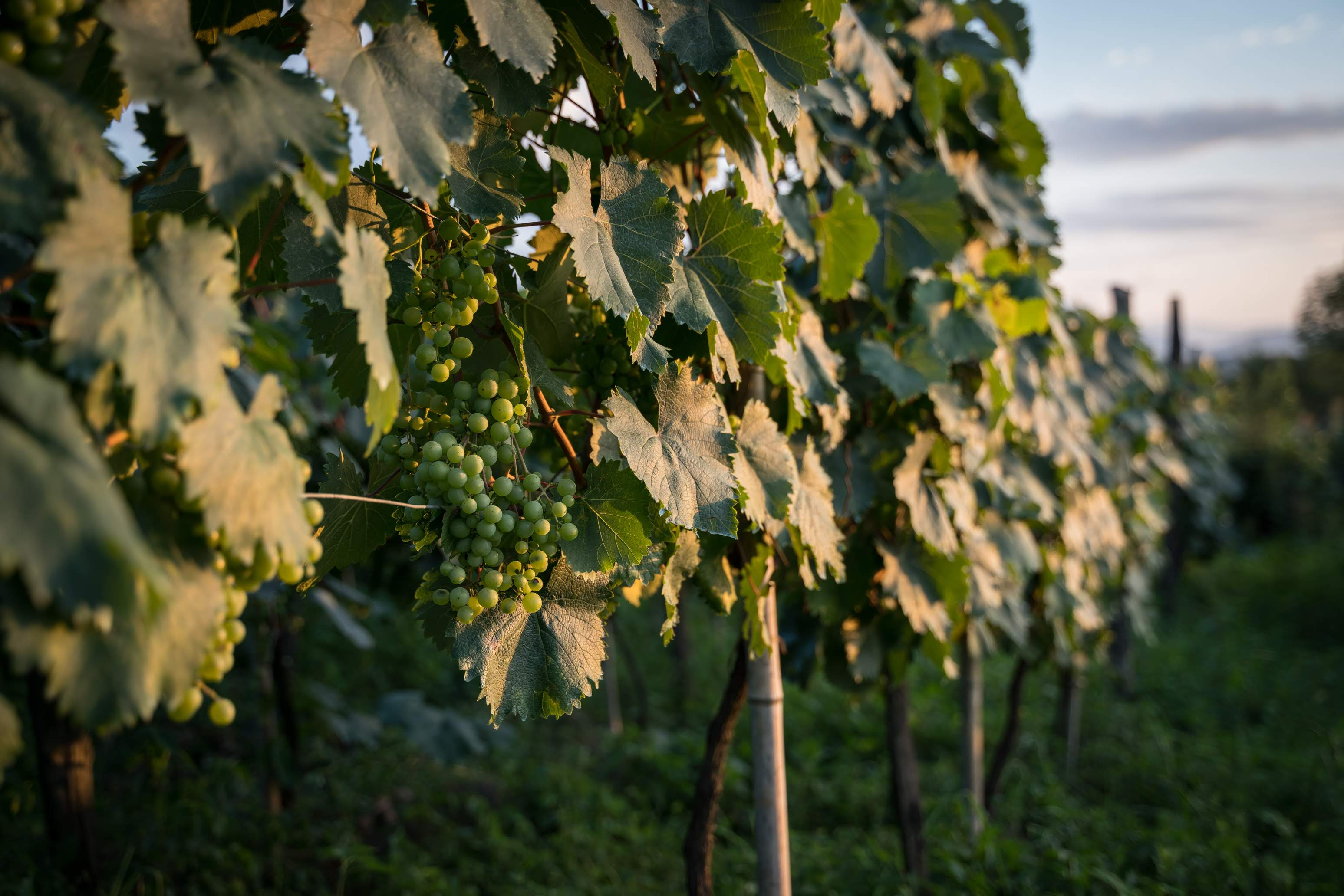
Amber wine, also known as orange wine, is a unique player in the world of viticulture. Wine enthusiasts love it for its distinct colour and complex flavours. The magic of amber wine is in how it’s made, treating white grapes more like they are reds. This process, often used in making orange wines, involves an extended maceration period with their skins, seeds, and sometimes stems, which is quite different from the typical white wine processes used in classical European (like French) winemaking.
Post-fermentation, amber wine, including varieties like Rkatsiteli and Kisi, paints a beautiful palette of colors. From shades of straw to glowing orange, deep amber, and even rich caramel in some cases. It predominantly acquires its signature amber/orange hue from prolonged skin contact. However, the color isn’t the only thing influenced by the production techniques; phenolic compounds present in the skin drastically change the flavors and aromas when comparing an amber wine to a white wine made of exactly the same grapes from the same plot of land but using no skin contact. Tannins in wines are also due to the skins and seeds, so unlike classic white wines which have little to no tannins, amber wines could fool your palate into thinking you have the mouth texture of a red wine!
So, if you love the depth and complexity of a red but usually go for white, amber wine might just become your new go-to. It’s a brilliant contradiction: a white wine with a red’s character, blending the best of both worlds.
The Georgian Legacy
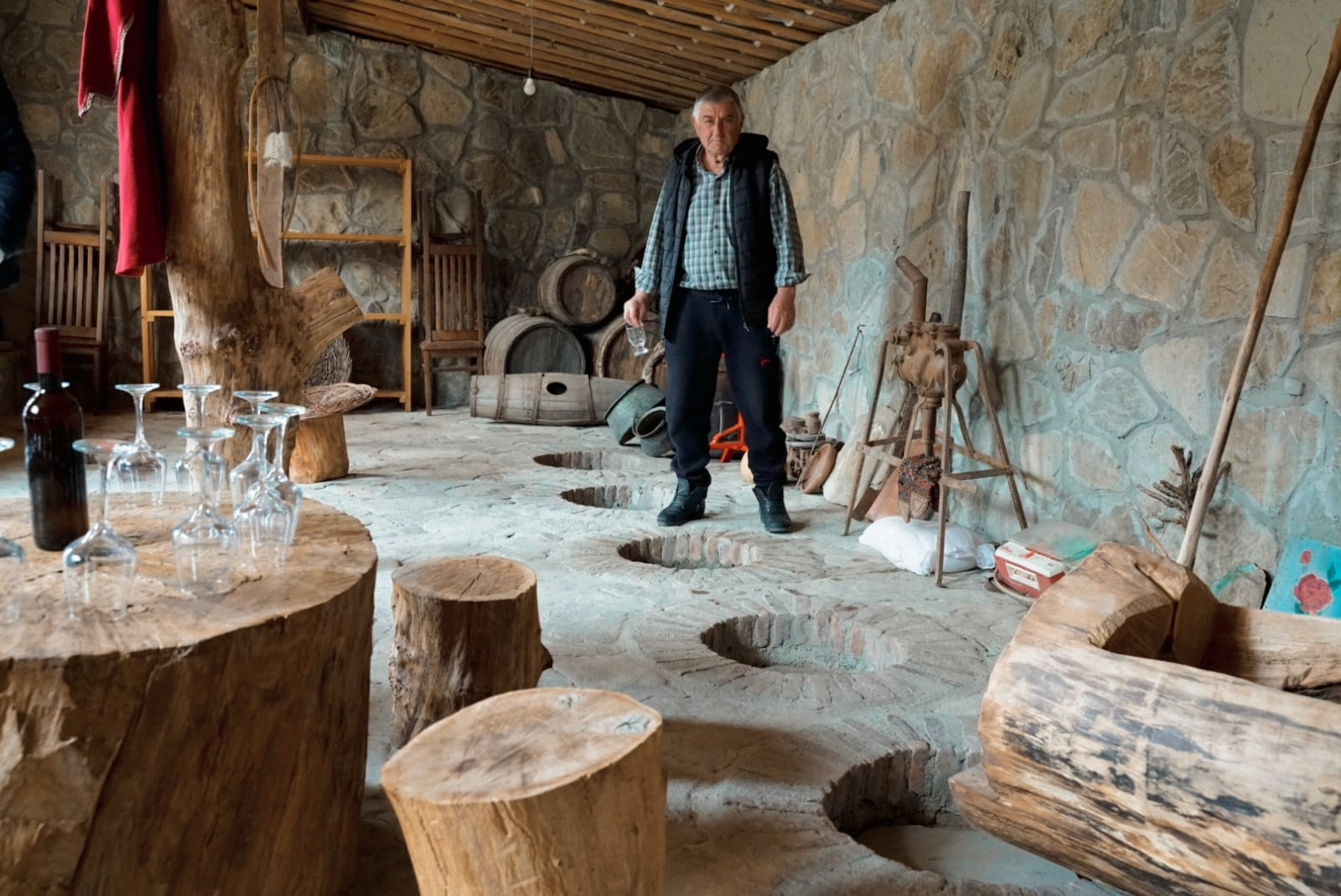
Where do the origins of these unique natural wines lie? We journey back through the history of Georgia. With a winemaking legacy that spans over 8,000 years, Georgia proudly holds the title of the cradle of wine. In this part of the world, wine isn’t merely a drink; it’s a pillar of culture, an heirloom treasured and passed down through the ages, speaking volumes of its profound cultural significance.
Come 2013, and the Georgian qvevri winemaking technique, pivotal in crafting amber wine, earned the honour of being added to UNESCO as an Intangible Cultural Heritage of Humanity. This accolade is a testament to the critical importance of safeguarding this age-old winemaking tradition. Additionally, the label ‘amber wine’ itself is steeped in Georgian roots, picked over the term ‘orange wine’ to sidestep any mix-up with wines derived from citrus.
The Qvevri Method
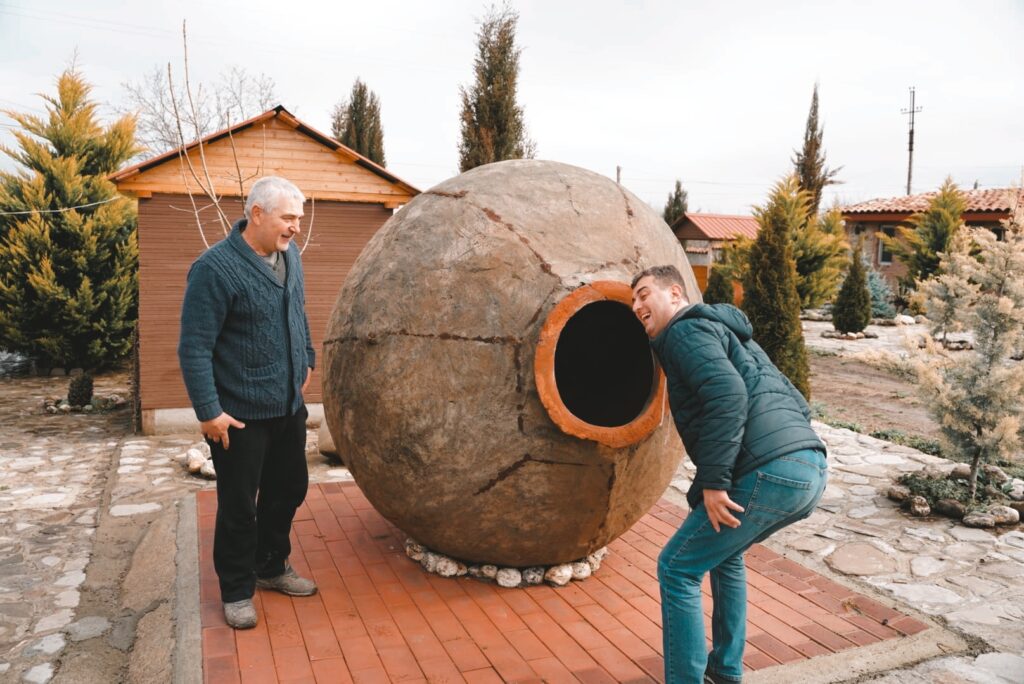
At the center of Georgian wine magic is the Qvevri – clay amphora essential for fermenting white grapes. The qvevri technique involves the spontaneous fermentation (natural yeast from the grape skins) of grape juice, skins, seeds, and occasionally stems, all together in this clay vessel. What sets it apart is how the wine ferments, then macerates underground for several months, as the qvevris are typically buried up to their neck. Being buried allows some natural temperature control from the moderating force of the soil around them.
This method bestows a distinctive taste, texture, and of course orange colour to the amber wine, thanks to the extended skin contact during fermentation. Oxidation during maceration and aging is typically more than in classical European winemaking, which also creates a distinctive character. The qvevri is the beating heart of the natural wine tradition, a testament to Georgia’s deep-rooted winemaking heritage. Visit the qvevri builder with us.
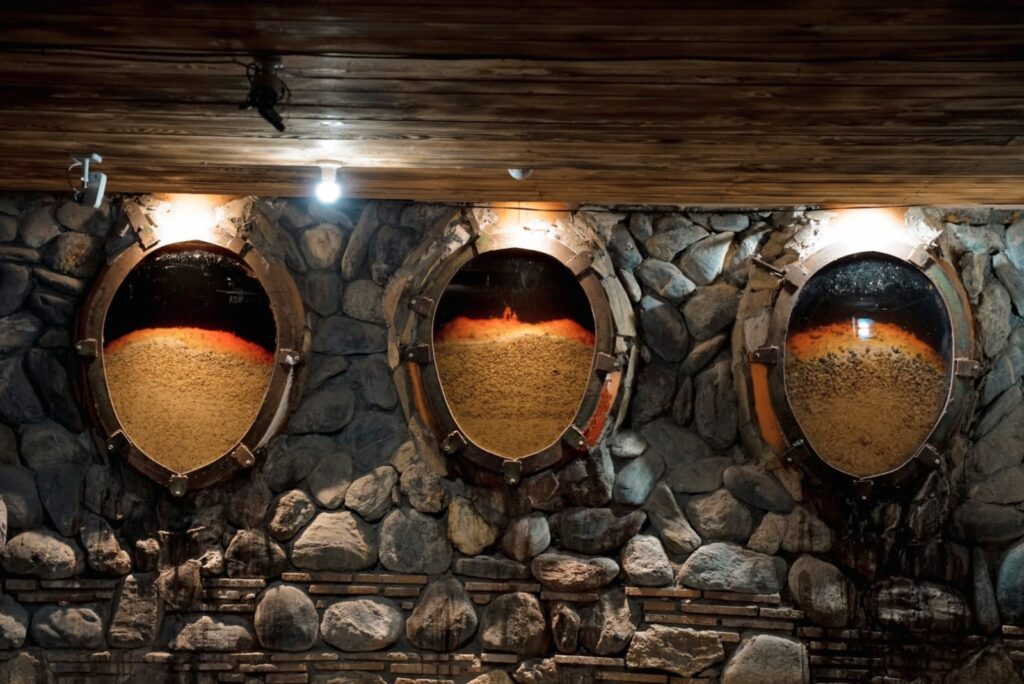
So, when you take a sip of amber wine, you’re not just enjoying a drink. You’re immersing yourself in a rich cultural tapestry, a legacy of tradition and craftsmanship, all embodied in each glass of this resplendent golden beverage
Crafting Amber Wine
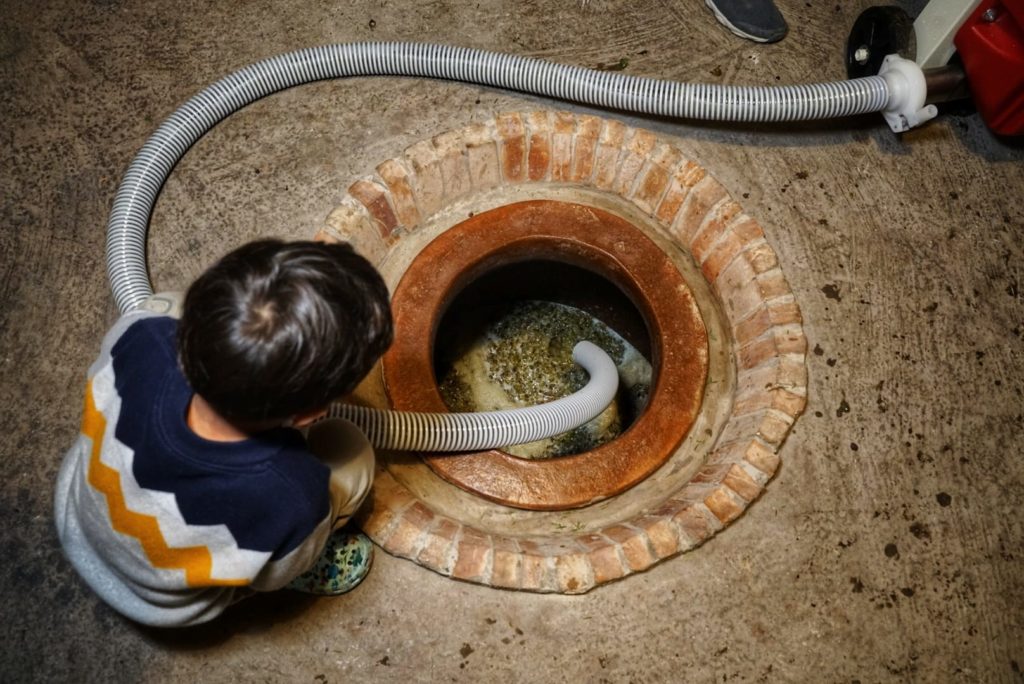
Crafting amber wine is a blend of tradition and innovation. Winemakers use methods traditionally reserved for red winemaking, like extended skin contact, and combine them with various fermentation methods. This results in distinct styles of amber wine – from easy-going lighter wines that may only use 30% skins and shorter maceration (a few weeks) to full-on amber intensity that may have 6+ months skin contact and powerful tannins, each with its unique charm. It should be noted that length of skin contact is not the only factor in color, flavor and tannins.
The fermentation of amber wines typically takes place at warmer temperatures with less emphasis on strict temperature control. Natural yeasts are traditionally employed in the fermentation process in qvevri, but more modern twists on this see amber wines made in different types of amphorae, barrels, or tanks. The skin contact is key, so amber wines can be made in any vessel. But the qvevri provides a historic method, and lends a different environment to the wine.
In their quest for authenticity, some modern natural winemakers choose not to add sulfur dioxide (or only very minimal amounts) when producing natural amber wines. This allows them to retain the natural characteristics of the wine, offering a purer, more organic taste experience. As such, crafting amber wine is an art – a delicate balance between honoring tradition and embracing innovation in the world of organic wine and natural wine. The side-effect of not adding sulfites is that the wine will not keep as long, and should be enjoyed young, even fresh, and even un-bottled direct from the qvevri – so you need to come to Georgia to experience the vibrance of new wines straight from the qvevri!
Tasting the Tradition
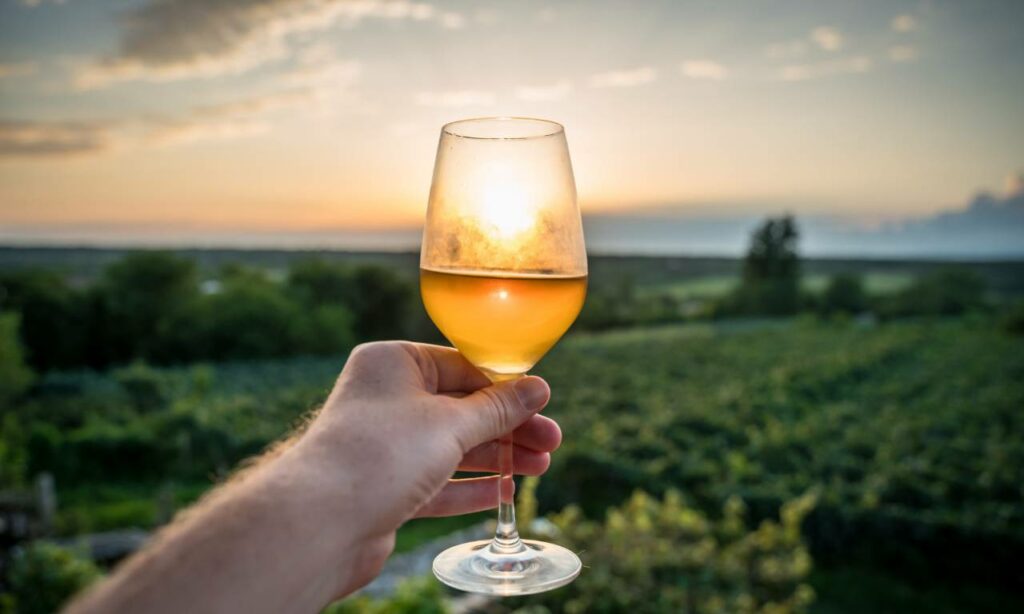
Tasting amber wine is a sensory adventure. Its distinctive features include:
- Orange hue and varying shades of white, yellow, amber, straw, gold, caramel and even pink hints.
- Result of natural wine making practices, including skin contact.
- Enhances the visual appeal.
- Adds a unique textural quality to the wine, including tannins.
When you’re ready to dive into the world of amber wine, take a moment to sniff the initial aromas before giving the glass a twirl. It’s a bit like opening a surprise package – first, you get a whiff of what’s inside, then as you let it breathe, all sorts of additional scents pop out, adding extra depth to the wine’s aromatic story. It’s all part of the fun and discovery in wine tasting!
When it hits your palate, amber wine is a rich and gutsy experience. You’ll find flavors like honey, dried fruits, and nuts, even in young wines, all wrapped up in a unique tannic structure. The amount of time the skins hang out with the juice during fermentation really shapes the flavour, so each sip is a one-of-a-kind adventure.
Due to the BIO nature of artisan winemaking in Georiga often tasting each new vintage of amber wine really is a remarkable journey, with each glass a new discovery, a different chapter in the story of this fascinating wine.
Discovering Georgian Amber Wine Varieties
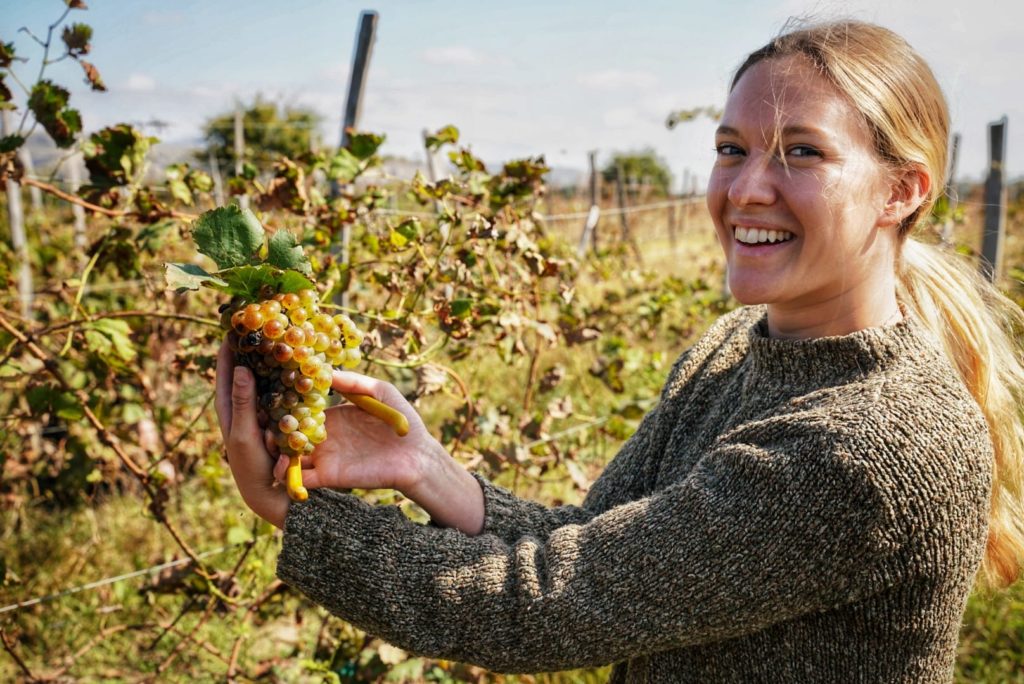
The real charm of amber wine is in its variety. In Georgia, traditional grapes like Rkatsiteli, Mtsvane, and Kisi are often the stars of the show. You’ll find these wine varieties in many producers’ collections, serving up a true taste of classic Georgian amber wine.
But the story of amber wine doesn’t end in Georgia. Grape varieties from further afield, like Riesling and Chardonnay, can also take a turn in the amber wine spotlight. They get the skin-contact treatment just like their Georgian cousins. This opens up a world of possibilities, letting winemakers from all corners add their local flair and personal touch. It means there’s a whole spectrum of flavors and styles out there for us wine enthusiasts to discover and delight in.
Serving and Savouring
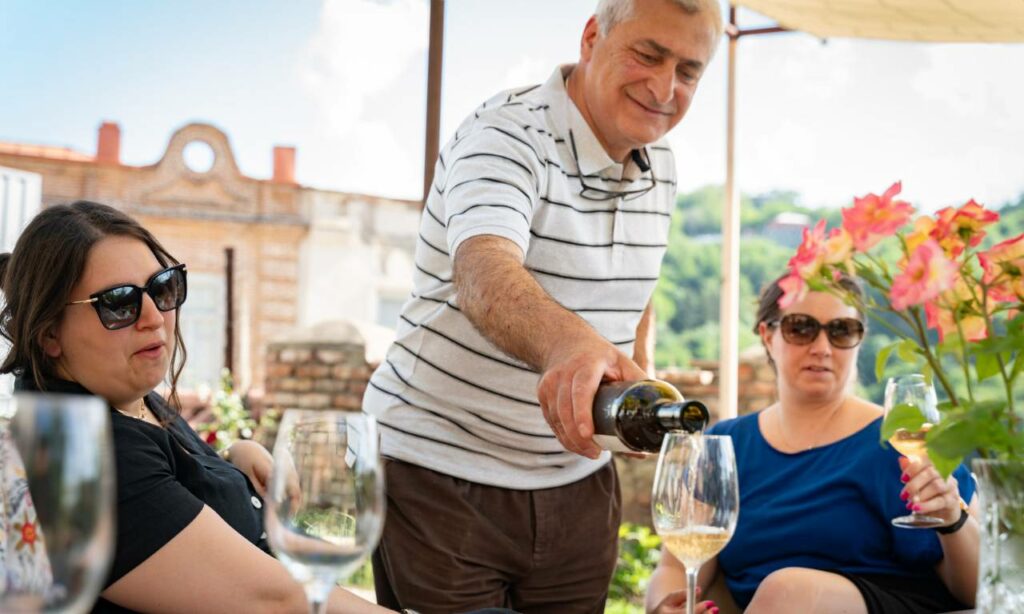
Like any fine wine, serving and savoring amber wine requires a bit of finesse. Here are some tips for serving amber wine:
- Serve it slightly chilled at approximately 55°F (around 12 to 16 degrees Celsius) to allow its full range of flavors to emerge.
- To reach the ideal temperature, amber wine can be cooled in the fridge for 20 minutes before serving.
- Alternatively, if the wine has already been chilled in the fridge, take it out 20 minutes prior to serving to allow it to warm up slightly.
By following these tips, you can fully enjoy the flavours of amber wine.
When it comes to glassware, an expansive red wine glass is ideal for serving amber wine. This type of glass enhances the wine’s interaction with air, helping to open up its complex flavour profile. But this is just a suggestion – drink wine in what you have available. At a Georgian family supra you might not even get a traditional wine glass to have your wine in. Use what you have and enjoy!
Perfect Georgian Wine Pairings
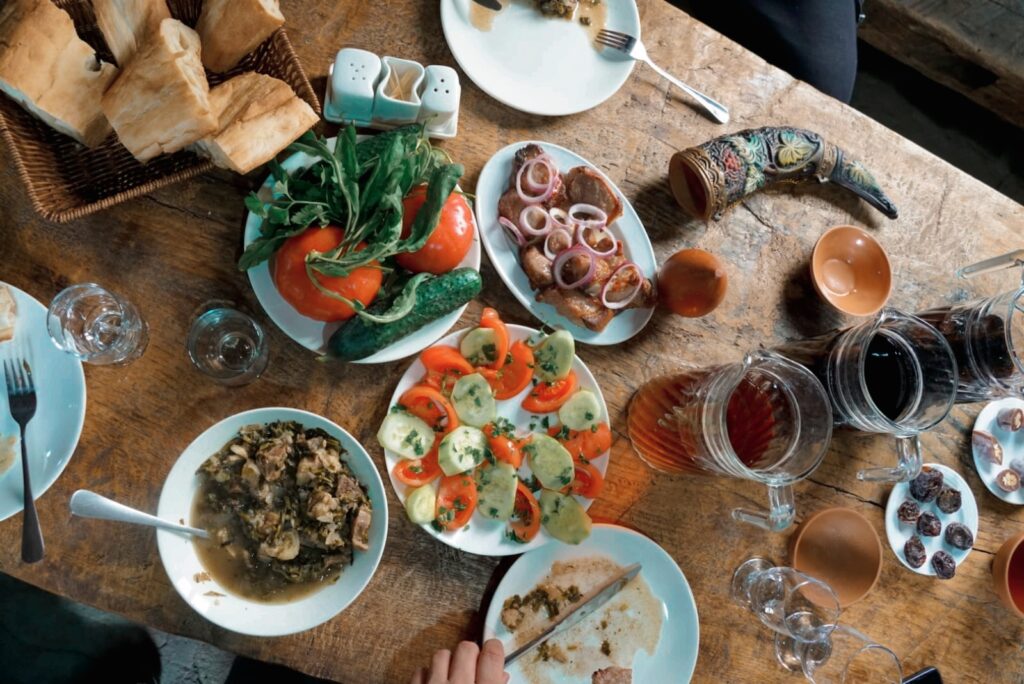
Amber wines, with their savoury complexity and noticeable tannin astringency, are better suited as food wines than for aperitivo alone. But what foods pair best with amber wine? Let’s explore.
Hearty game meats like venison, duck, or wild boar are perfect pairings for amber wine’s robust tannins and intense flavors. Fresh barbecued pork is of course a Georgian family favorite. If you’re a cheese lover, aged cheeses such as Gruyère, Parmesan, or Manchego bring out the best in amber wines due to their complimentary nutty and savory characteristics.
Even vegetarian dishes featuring bold flavors, such as roasted root vegetables, spiced lentils, or stuffed bell peppers, pair effectively with the fruity and earthy notes of amber wines. So, regardless of whether you’re hosting a dinner party or spending a quiet evening at home, there exists an amber wine pairing that will complement any occasion.
Orange Wine Around the World
This style of wine isn’t confined to the borders of Georgia. It has made its way around the world, with producers in countries like Italy, Slovenia, Australia, USA, and many others embracing amber winemaking methods, using both local and international grape varieties.
Josko Gravner from Italy and Aleks Klinec from Slovenia are noteworthy figures in the amber wine movement. Gravner, in particular, is a pioneer who incorporated Georgian clay amphorae into his winemaking process. The resurgence of amber wine has revitalized ancient production techniques, particularly around the Collio vineyards of Friuli, Italy, and in wineries across Slovenia.
Initially popularized in regions such as Georgia, Slovenia, and Northeast Italy, amber wine now enjoys a global presence, produced and appreciated worldwide. Therefore, irrespective of your location, you’re probably just a click or a cork-pop away from enjoying a bottle of this golden elixir.
Where to Buy Georgian Amber Wine
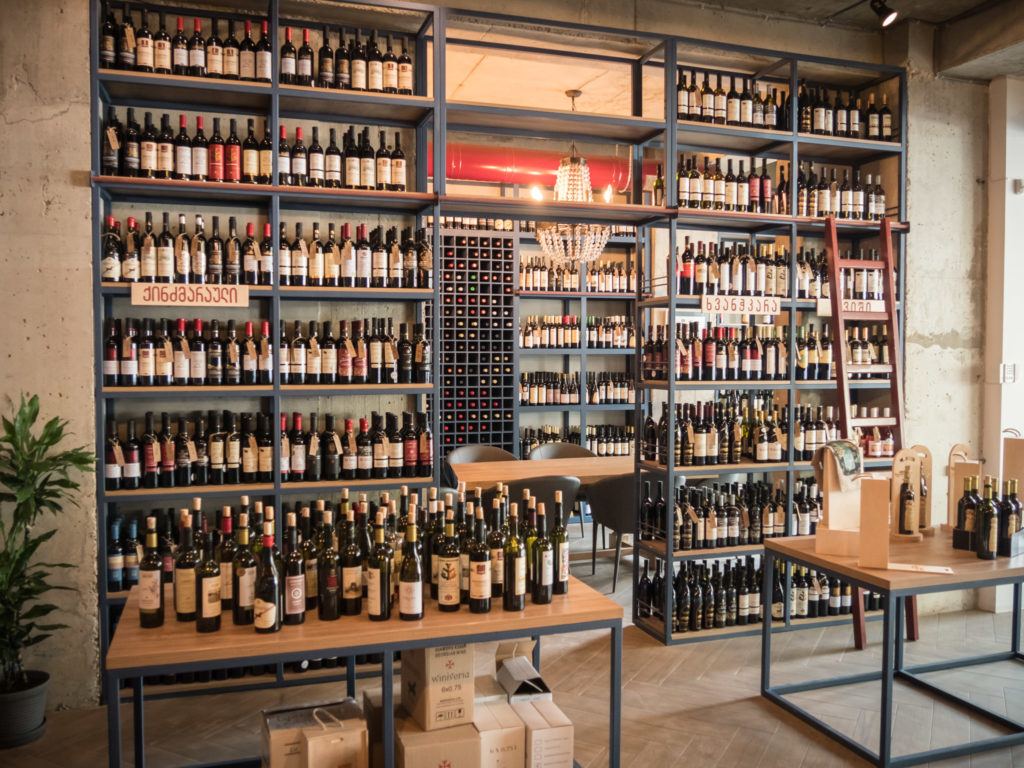
Amber wine (orange wine), can be purchased from online retailers that specialize in this wine type. They provide a range of selections based on wine characteristics, price, and variety, allowing you to find the perfect bottle for your taste.
If you prefer to shop in person, Georgian amber wine is available at local wine shops. You can also purchase it from several sellers such as:
- Ghvinos – USA
- Georgian Wine House Distributors – USA
- Tamada – Australia
- Hedonism Wines – UK
- 8000 Vintages – Germany
Amber wines offer an approachable option for a wide audience eager to explore this distinctive wine category.
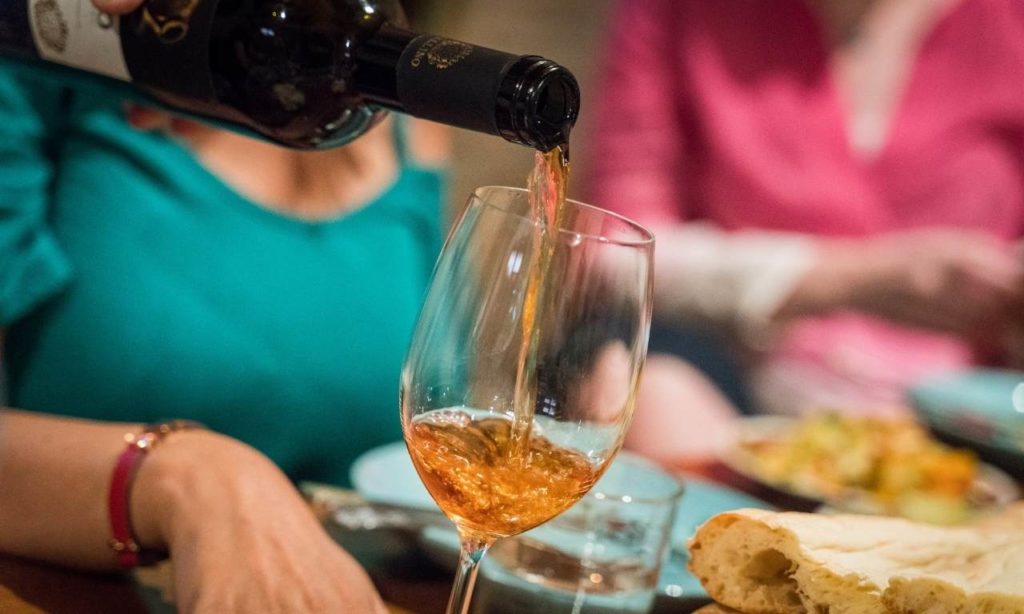
Amber wine is known for its distinctive colour and complex flavours, rooted in tradition yet embracing innovation. It delivers a tasting experience that stands apart, welcoming wine aficionados and newcomers alike to discover a unique aspect of winemaking
So, why not take a sip of history? Embrace the allure of amber wine, and let it transport you to the ancient vineyards of Georgia and beyond – or better yet come and visit Georgia and taste these unique white wines in their birthplace. After all, wine is not just about the taste – it’s about the experience, the tradition, and the journey. And amber wine offers all that in a single, delightful sip.

Get Our Free Georgian Wine Crash Course & Tasting Notes Card
Frequently Asked Questions
What type of wine is Amber?
Amber wine is a type of white wine made from white grapes using techniques traditionally used for red winemaking, involving fermentation on skins, seeds, and sometimes stems. So, while it’s technically a white wine, it has distinct characteristics and flavours that set it apart from classical European style white wines.
What is the alcohol content of amber wine?
Amber wine from Kakheti typically has an alcohol content of around 12.5% to 14.0%. So, it’s not too shabby! Cheers! But there is a massive range of amber wines from across Georgia, and different grape varieties and the amount of sugar when ripe and harvested affect the alcohol content. So 10.5% to 15% is also quite possible.
Should amber wine be chilled?
Yes, chill amber wine to 55-65 degrees Fahrenheit (12 to 16 Celsius) to bring out the flavors and mouthfeel without masking them, and once opened, it can keep a bit longer than white wine due to its tannins. Cheers to longer-lasting enjoyment!
How is amber wine made?
Amber wine is made by fermenting white grapes with their skins, seeds, and sometimes stems in a clay amphora called a Qvevri, resulting in different styles depending on the length of skin contact and winemaking techniques. So, it’s basically like making regular wine, but with a twist!





